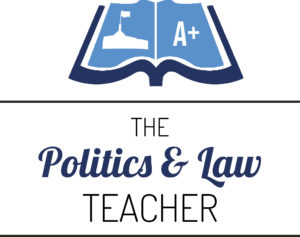This blog post supports Infographic 4/21, published in September 2021.
Syllabus:
- the ways human rights are protected in Australia, including in the Constitution, common law, statutory law, and charters of rights, such as the Charter of Human Rights and Responsibilities Act 2006 (Victoria) and the Human Rights Act 2004 (Australian Capital Territory)
- the status of international covenants, protocols and treaties in protecting human rights in Australia
It is well known that Australia is unique in being the only liberal democracy without a national-level bill of rights. Equivalent countries like the USA, Canada, the UK, and NZ have constitutional or statutory rights bills. This is not to say Australia’s human rights protection is deficient. On the contrary, a network of laws, some based on international human rights treaties, form a flexible yet robust system of human rights protection. Australia has favoured parliamentary control of human rights while strenuously resisting the alternative approach, demonstrated best by the United States, of relying on the judiciary as the guardians of rights.
Australia relies on a mix of Constitutional, statutory and common law to protect human rights. At both Commonwealth and State/Territory levels, much of the statutory rights framework is based on international human rights law.
Constitutional Rights
Specific (or express) rights
The Australian Constitution is not a “rights-based” fundamental law. Its purpose was to create an indissoluble federal Commonwealth, not to codify rights. Nevertheless, it specifies a small number of political (P), legal (L), economic (E), civil (C) and social (S) rights. They are:
- Section 41 – the right to vote (P);
- Section 80 – an entitlement to trial by jury in federal indictable cases (L);
- Section 116 – prohibits Parliament from establishing an official religion, leaving Australians free to choose their own, or none (S);
- Section 117 – prevents discrimination against an individual based on their state of residence (C);
- Section 92 – makes “trade, commerce and intercourse among the States … absolutely free”. It protects economic freedom and freedom of movement (E & S); and
- Section 51(xxxi) – compels the Commonwealth to compensate “on just terms” the owners of property it forcibly acquires (E).
Implied rights
The High Court interprets the Constitution. Interpretation involves the adjudication of contested Constitutional meanings. Words can mean more than they say; they may imply other meanings. The High Court has discovered rights implied by the words of the Constitution. The most important is:
- The implied right to freedom of political communication (P). This right is implied by Sections 7 and 24, which establish representative democracy in Australia by specifying that both houses are to be “directly chosen by the people”. The High Court ruled that representative democracy implies the freedom of political communication.
Statutory Rights
Many rights are codified in statute at both the Commonwealth and State/Territory levels. Most Commonwealth rights statutes protect particular rights. For example, the Disability Discrimination Act 1992 protects against discrimination based on physical or mental disability. Other rights are codified within general laws. For example, the right to seek asylum is protected in the Migration Act 1958.
In most cases, the Commonwealth and State / Territory statutory rights framework is geared to preventing rights abuses from happening rather than remediating abuses that have occurred.
Commonwealth rights statutes
The source of most statutory rights is international human rights law (see below). Human rights conventions, covenants and optional protocols are treaty agreements that originate from the United Nations. Australian governments have agreed to many of these treaties since the 1950s. In addition, the Commonwealth Parliament has legislated several UN human rights treaties into domestic law. Three examples are the:
- Race Discrimination Act 1975 based on the International Convention on the Elimination of All Forms of Racial Discrimination (CERD); and the
- Sex Discrimination Act 1984 based in the International Convention on the Elimination of All Forms of Discrimination Against Women (CEDAW); and the
- Migration Act 1958 contains provisions based on the Refugee Convention 1951.
The Australian Human Rights Commission Act 1986 created the Australian Human Rights Commission (AHRC), an independent agency of the executive with the responsibility for human rights education and mediation of rights disputes. The AHRC is led by the Human Rights Commissioner and has separate Commissioners tasked with upholding each of the main pieces of rights legislation. For example, the Race Discrimination Commissioner upholds the Race Discrimination Act 1975. There are Commissioners for sex and disability discrimination, amongst others. The AHRC lacks judicial power and can only mediate disputes. Complainants may take rights matters to the Federal Court only after exhausting all other avenues, including mediation by the AHRC.
The Parliamentary Joint Committee on Human Rights (PJCHR) was established by statute in 2011. It was created following a recommendation of the Brennan Report, a human rights consultation process conducted by the Rudd Government. The Committee is based on the UK Parliament’s human rights committee. The PJHRC scrutinises most bills for compliance with seven international treaties. Parliament can still pass laws incompatible with rights; however, Parliament is obligated to explain why they conflict with international human rights law.
State & Territory charters of rights
The ACT, Victoria and Queensland have legislated “bills of rights” or “charters of rights“. These statutory bills of rights are based on the International Covenant on Civil and Political Rights (ICCPR) and incorporate 20 human rights. Each charter creates a human rights commission with a similar role to the AHRC. The form of the three laws is nearly identical and echo the United Kingdom’s Human Rights Act 1998. All these laws place an onus on Parliament and governments to consider rights when making laws or policies.
The charters do not prevent Parliament or the government from enacting statutes or policies incompatible with rights. However, Parliament and ministers must explain why laws are incompatible with the State or Territory charter of rights. Courts are limited to issuing ‘declarations of incompatibility if a statute or policy falls outside the States’ or Territory’s charter of rights requirements. Such a court declaration requires Parliament or ministers to explain. No court has the power to strike down or invalidate an incompatible law or policy. It is this mechanism that keeps Parliament in control of rights and limits the role of the judiciary.
Complainants may bring a rights case to court, but only as part of another complaint and after exhausting all other options, including mediation by the State or Territory human rights commission. Litigation of rights is the last resort. This is another mechanism designed to limit the judiciary’s involvement and prevent the third branch of government from becoming the guardians of rights.
The relevant statutes are the:
- Human Rights Act 2004 (ACT)
- Charter of Human Rights and Responsibilities Act 2006 (Victoria)
- Human Rights Act 2019 (QLD)
Common law rights
Common law rights exist within different contexts. They are the trial context and the statutory interpretation context.
Context: trial
The accused in a criminal or civil trial is entitled to the right to silence, a presumption of innocence, and a fair trial. The defendant in a criminal case is also entitled to legal representation and client-legal privilege, which protects communications between an accused and their lawyer. All parties to a trial are entitled to a fair hearing.
Adversarial trial procedures ensure natural justice within constraints imposed by cost. The pre-trial, trial and post-trial procedures ensure impartial adjudication by a judge and jury. The accused is entitled to know the case against them and have an opportunity to present their defence. Decisions are based on evidence according to strict rules. Trials are open except in exceptional circumstances.
Context: statutory interpretation
Courts apply the principle of legality – also called ‘the clear statement rule’ – when interpreting statutes. They assume a statute is consistent with fundamental rights and freedoms unless Parliament expressly and clearly states otherwise. Judges will interpret ambiguous statutes in ways that uphold rights. The principle of legality protects privacy. It also upholds the rule of law by favouring interpretations against retrospective laws.
The principle of legality also protects political, civil, legal and economic freedoms and rights by assuming Parliament does not intend to limit them. These include the right to movement, personal liberty, access to courts, rights to appeal, client-legal privilege and religion. The principle of legality also protects the political freedoms of speech and assembly.
James Spigelman, former judge and retired Governor of NSW, has argued that the principle of legality is effectively a “common law bill of rights”. However, it is clearly unlike a statutory or constitutional bill of rights – both of which are laws deliberately constructed to protect rights and raise rights awareness. In contrast, the principle of legality is a doctrine of interpretation largely unknown outside the legal profession.
The status of international law in Australia
United Nations covenants and conventions are treaties – that is, they are binding on countries that sign and ratify them. Protocols are separate optional treaties linked to an existing covenant or convention. They add further binding obligations on signatory countries. Declarations are not treaties, but they have moral, if not legal, force.
International human rights law is the body of treaties, declarations and protocols created by the United Nations in the years following the Second World War.
Australia is a party to seven core international human rights treaties. Of these, a number comprise the “International Bill of Human Rights”- the term used by the UN to describe five critical human rights declarations and treaties. They are:
- The Universal Declaration of Human Rights (UDHR);
- The International Covenant on Civil and Political Rights (ICCPR);
- The International Covenant on Economic, Social and Cultural Rights (ICESCR); and the
- The Optional Protocol to the ICCPR; and
- The Optional Protocol to the ICESCR.
As a signatory of the five declarations and treaties, Australia has agreed to be bound by the “International Bill of Human Rights”. In addition, Australia is also a party to treaties protecting children and refugees’ rights and preventing torture. Consequently, these treaties, covenants and protocols have a binding status in Australia.
Human rights treaties allow the United Nations to periodically review and report on Australia’s human rights compliance. The United Nations Human Rights Council (UNHRC) carries out Universal Periodic Reviews and issues ‘score-cards’ on Australia’s performance. However, as a sovereign nation, Australia is free to reject any United Nations criticism of its human rights practice. The lack of enforceability undermines the status of international treaties, covenants and protocols.
Meanwhile, the Commonwealth Parliament’s PJCHR (see above) scrutinises bills, checking them for compatibility with these treaties. The AHRC upholds these treaties by educating the government and the private sector on human rights. Some UN treaties have statutory status – for example, the CERD, CEDAW and the Refugee Conventions outlined above.
State and Territory “charters of rights” are based on the ICCPR, giving that particular treaty statutory status in the ACT, Victoria and Queensland.
The High Court looks to the rights jurisprudence of specialist courts, such as the European Court of Human Rights. At times it is guided by these courts’ approaches. This practice gives international human rights law a persuasive status in Australia’s rights jurisprudence.
What makes Australia’s human rights approach unique?
The adoption of the United Nations “International Bill of Human Rights” as the principal framework for protecting human rights ensures Australia’s approach is consistent with other liberal democracies. This is true even allowing for the fact that Australia lacks its own constitutional or statutory bill of rights.
As a federation, Australia can adopt alternative approaches in different jurisdictions. After the ACT introduced its Human Rights Act in 2004 other States and Territories were able to observe it in action, adopt their own versions and create momentum for change in how human rights are protected. So far, three of the nine jurisdictions in Australia have adopted the ICCPR as the framework for a legislative charter of rights. It may yet come to pass that other States and the Commonwealth may follow suit.

